10 Best Ecommerce Link Building Strategies for 2025
Link building is a highly effective search engine optimisation (SEO) strategy. It is a way…
Implementing the right eCommerce SEO strategies requires more than just dedication and hard work. It also requires you to have a fully extensive and comprehensive understanding of just how SEO and eCommerce are entwined, especially if you are to go it alone. Even if you enlist the help of experts, if you are looking to increase your targeted traffic, our expert guide has it all, from stats and the latest trends in eCommerce to understanding technical SEO and how best to implement link buildingLink building is a process of acquiring links pointing to your website. These links are obtained by creating content, participating in social media or commenting on other blogs..
So without further ado, let’s jump right into it.
SEO is hugely important for eCommerce websites and for one very good reason:
Over 3.5 billion Google searches are made every day.
If this wasn’t all, it was also estimated that:
With stats such as this, it brings confidence that the future of eCommerce will be strong. However, this doesn’t answer the question of why you need SEO for eCommerce.
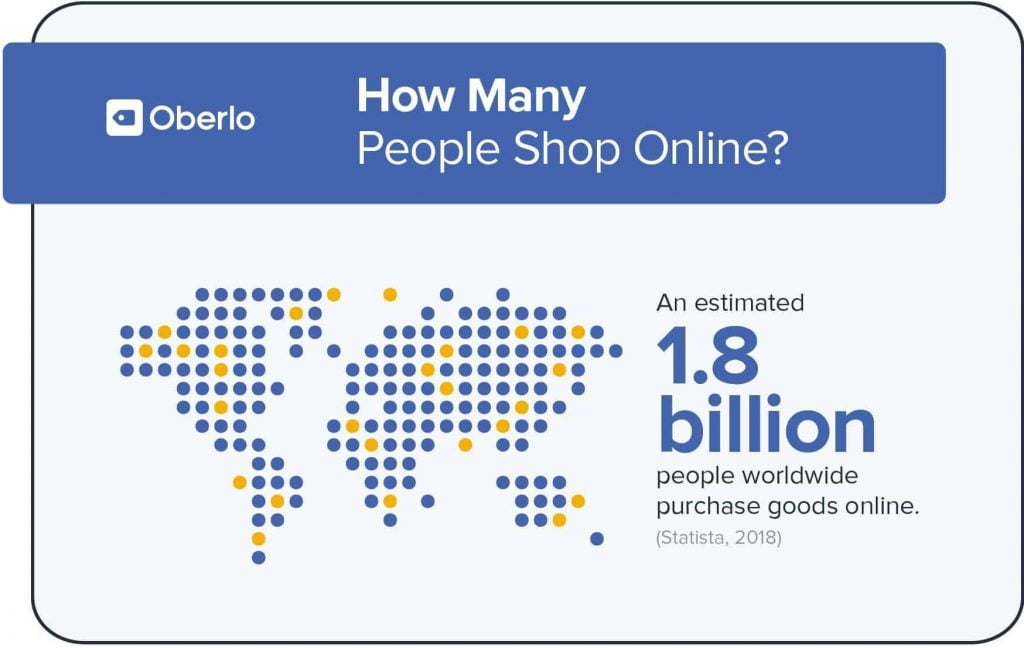
Of those people shopping online, 44% of people started so with a Google search – the front leader of the SERPs.
Therefore, you need to find a way to showcase just what you have to offer. How do you do that?
The answer lies with SEO. You need to climb the ranks of Google and position yourself on page 1 or 2. Gaining a position on these top pages will increase your traffic enormously. Without it, consumers will simply fail to find you, and you will be relying on direct, referrals, social, and paid traffic.
Search traffic doesn’t bring as much as direct traffic does, at 37.5%, but it does offer more long term results, especially when combined with other sources of traffic. This is why SEO is important!
So, this brings us nicely onto the next segment of the guide. We have put together the top SEO tips for eCommerce sites in a step by step process.
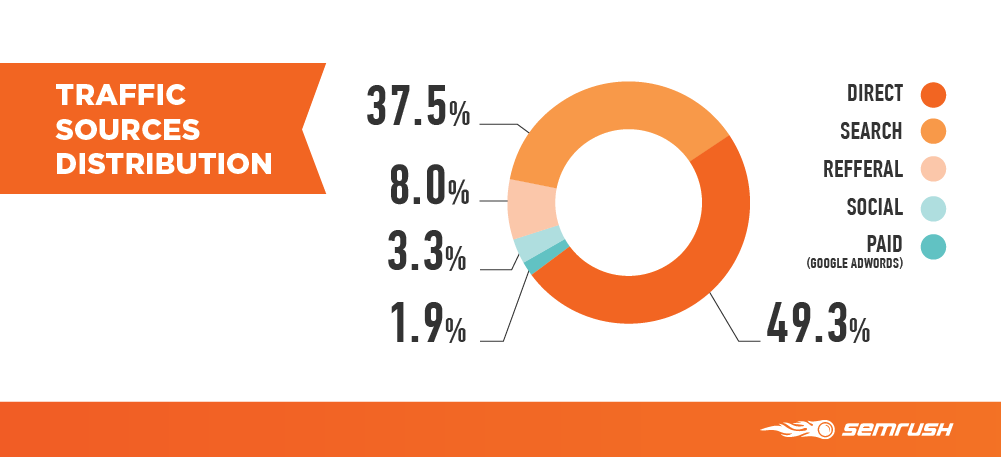
For every SEO campaign, the first step revolves around keywordKeywords are the words and phrases that potential customers might search for to find your business. research. Some experts would even call it the foundation of SEO campaigns. Why? Without keywords, your website has little chance of being found by Google, let alone your consumers.
However, keyword research usually revolves around “information keywords,” for example, “how-to” questions that require helpful content, such as “how to start an SEO campaign?” When somebody types this in, they are expecting to find informative guides, rather than a company trying to sell them their services.
Although this might have a place within eCommerce (after all, Google loves high-quality, informative content), there is something more important to focus on, and this is product searches.
First, you need to figure out your goals. Do you want to make more sales, increase traffic, or just build more awareness of your brand? For most eCommerce businesses, the goal will likely be to make more sales.
Then, with product-focused keywords and your goals in mind, you can get started.
There are multiple ways that you can find keywords, including:
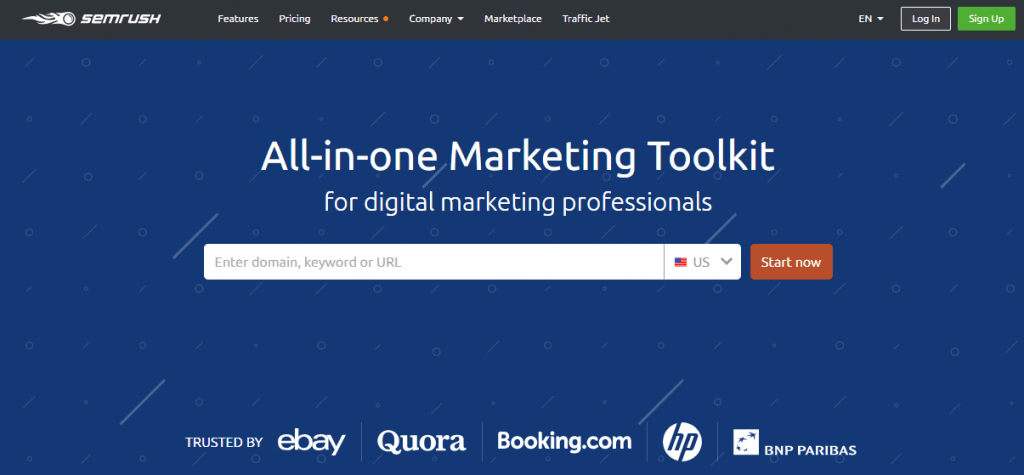
What many of these research methods will do is provide you with an insight into:
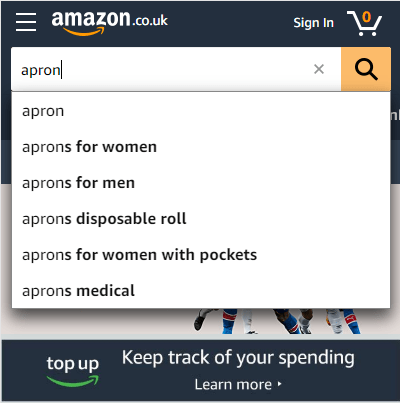
If you want to start with the biggest competitor of them all, then simply open the Amazon search bar and start typing in a relevant keyword to your business.
Upon typing, Amazon will start to suggest long-tail keywords.
The difference between long-tail keywords and short-tail is whether the phrase uses more than 3 words.
As an example, a short tail keyword could be “Apron”. Someone has simply searched for the product. They haven’t specified what type of apron they want, whether they want it from a shop near them, or whether they want it to be unique.
The keyword “Apron” brings up over 90,000 results in Amazon, and 327,000,000 results in Google. If you are an eCommerce store trying to sell aprons, you are going to find it very difficult to stand out. This is where long-tail keywords come in handy.
A long-tail keywordLong-tail keywords are phrases with more than two words. They're also more specific, often using modifiers to narrow down a search. could be “personlised apron with pockets” or “green apron with pockets”, or even “cute apron for cooking”.
Top Tip: The great thing about long-tail keywords, or targeted keywords, is that they are more precise and less competitive, which means better chances of ranking higher.
By finding long-tail keywords that are less competitive, you can optimise your site with them and start to attract those that are perhaps searching on mobile (long-tail keywords are used more with mobile searches) or just interested in finding a specific product that you offer. Focus on what makes you unique, and you can turn your keywords into more targeted versions of broader keywords that you can’t currently rank for, for example.
This is a great starting point. You then delve deeper and take a look at their categories. This way, rather than having categories on your website that you think are useful to customers, you can find relevant keywords you should be using instead.
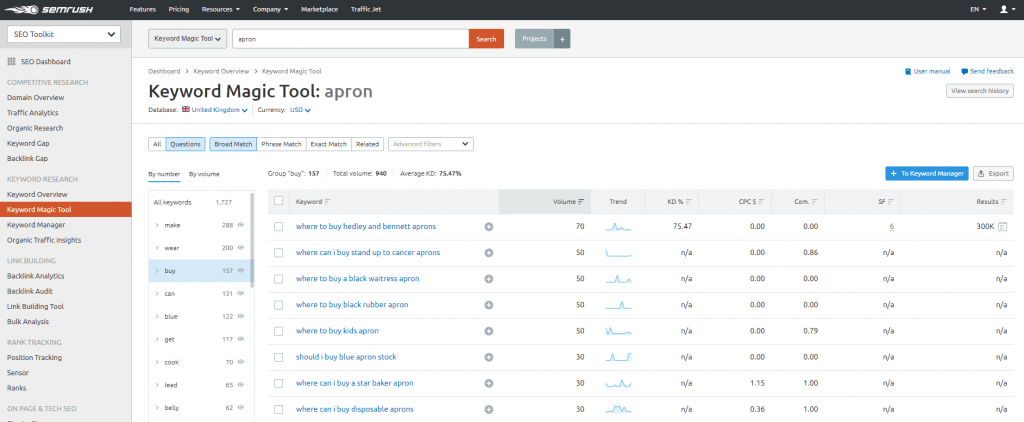
Your keywords need to be completely relevant to what you sell. There is no point ranking for the keyword “best cooking utensils,” if you sell high heels. However, you will also need to look at search volume – if no one searches for that term, it doesn’t matter how well it converts or how competitive Google’s first page is, it isn’t worth it. You will come to a natural understanding of what is “high” and “low” for your industry.
Also, consider that some keywords could be seasonal, a personalised apron with pockets might be popular around Christmas due to more people looking to buy gifts.
You then need to start running a technical SEO audit. You don’t want one problem to be the difference between your ranking below your competitor. Common issues that crop up include:
Issues such as site speed and broken links are easy to fix by upgrading your host and renaming or moving your URLs, for example; however, the other three are a little bit more complicated but incredibly important. So how do you solve the other issues? Let’s take a look.
It might seem insignificant, but how your site is organised can greatly affect your ranking position and user experience. Trying to please both is often where people go wrong.
The best approach to this is keeping the structure as simple as possible. When we say simple, what we mean is that every page is only a few clicks away from the homepage. Why? Having anything more complicated will confused both Google and your users, leaving the latter frustrated and Google missing essential pages.
In order for Google to rank your page, it needs to be correctly indexed. Google will send their crawl bots to navigate your website, and if they discover a new page, they will index it. However, they will miss your product pages if your website:
This isn’t to say that you want all of your product and category pages indexed. For example, you might sell the same product in 5 different shades. Technically, they would be competing with each other. Therefore, you don’t need to index them all. Add a “noindexThe noindex meta tag tells search engines not to index the page and show it in search results., follow” and block these pages so that time isn’t wasted crawling them.
Then with one “master page,” you can then create a spider web of internal linking distribution to other pages on the site. This is going to do two things: allow Google to crawl your site more easily and then rank your website better. Plus, it is going to solve your technical SEO problem of having duplicated content, as long as they have unique URLs – see this below.
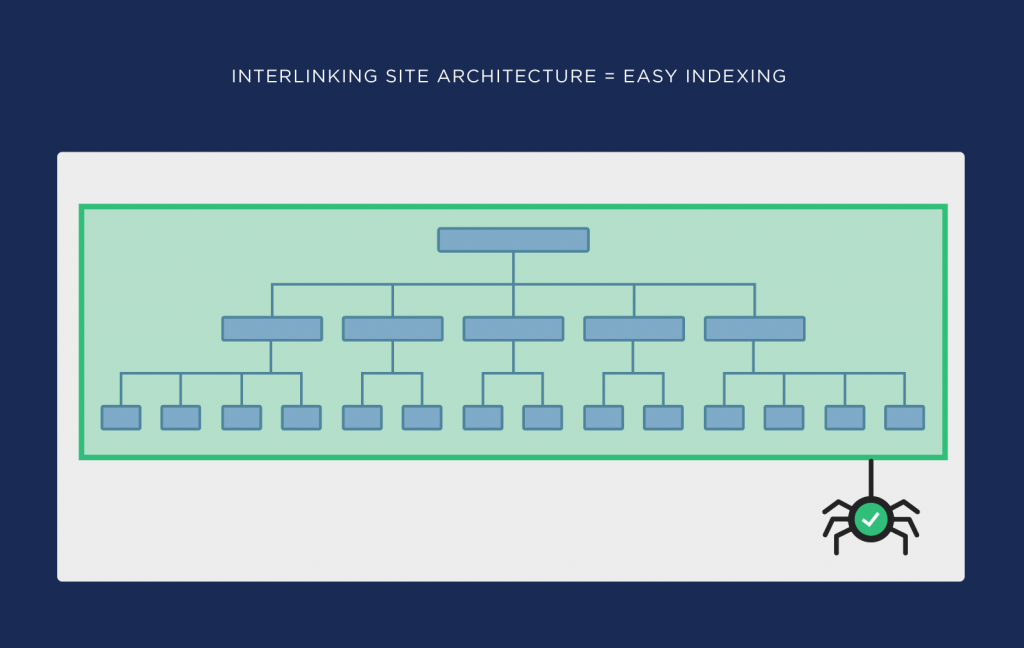
With your site structure improved and your keywords under your belt, now it is time to put them to good use and further improve your site.
The key to eCommerce stores being successful is making the most of on page optimisation.
Your product pages URLs are going to be longer – that is a fact. However, long URLs will not only dilute your use of keywords, but it will also confuse Google because they also contain unnecessary wording, such as:
https://ecommerceexample.com/productID4827361
Google isn’t going to know that productID4827361 is a page for high heels. Nor are customers likely to trust it. To combat all of this, you need to be using keyword enriched URLs. Googles like to keep things simple – so aim for between 50-60 characters and don’t include words like “a” or “the”. For example, for a high heels product page, your URL could look a little something like this:
https://ecommerceexample.com/shoes/highheels
To further categorise this, you could add a dash so that it becomes:
https://ecommerceexample.com/shoes/highheels-wedges
The above URLs are much cleaner to look at, have utilised your keywords, and made it easier for Google. Having short and unique URLs with the use of keywords will also combat the problems of duplicated content and too many pages.
Once you have added the “noindex”, now you need to tell Google these are exact copies or slight variations of the same page.
Add a canonical tagThe canonical tag is used to designate a single page as the original page, or the page that should be indexed by search engines. to show the difference between the same content. This will also make backlinks more valuable.
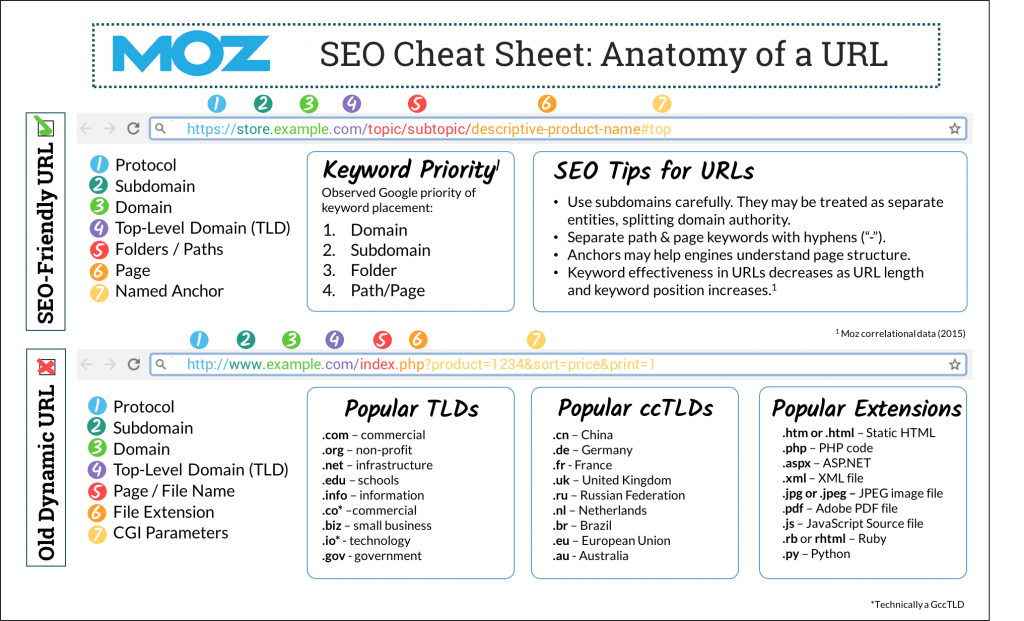
You need to write as many product descriptions as possible, and the longer, the better. Google needs to know exactly what your products are to understand you better (this is why keywords are so relevant), and if your content is too thin in their eyes, they don’t have a lot to go off of and won’t rank you highly. If you need help with these, then turn to SEO content writing experts who will create unique, engaging, and informative product descriptions.
Top Tip: Include reviews (the more unique, the higher you will rank); not only does this save your time yourself, but people trust reviews.
If your website has too many category pages with thin content, this will confuse Google. You need at least 5-10, if not more, unique products on any category page to justify it being there.
However, getting the right balance is key – so don’t make it too lengthy.
Google will see a 1000 words piece as an article, and the page won’t rank as well. Consumers are there to purchase a product, after all, but you still need to make sure Google understands what you are offering. This is why keywords matter so much!
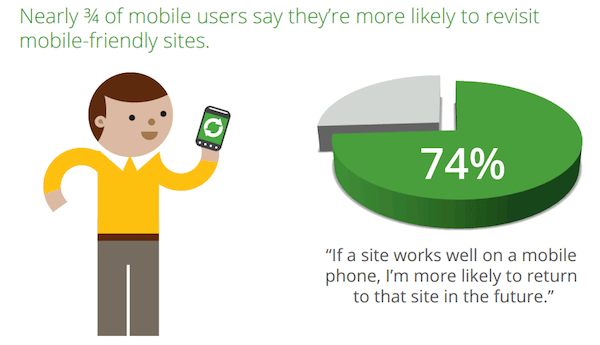
As a major eCommerce trend, by ensuring that your site is mobile optimised, with user experience in mind, such as offering multiple ways to pay, you are going to drive more traffic your way. Optimising your site, however, doesn’t mean to say that the entire design will change – instead, it means making a difference to how well it is received by Google.
You might sell products, but that doesn’t mean to say you can’t delve into the world of content! Content marketing can drive a lot of traffic from the search results pages.
If you haven’t already started to produce content for your site, now is the time! Many customers will also be interested to see how much you know within the industry.
The best way to do this is with a blog. This is where internal linking and utilising your keywords can come in handy. However, content for eCommerce websites comes in various forms, not just blogs; you can also produce:
What you choose should be based on what your customers and ideal target audience prefer. However, it is handy to know that 62% of consumers will watch product reviews before purchasing a product. If you want to increase conversionA conversion is a desirable result on a website that leads to an action such as completing an order, filling out a form, or simply clicking on a link. rates, this could be the way forward.
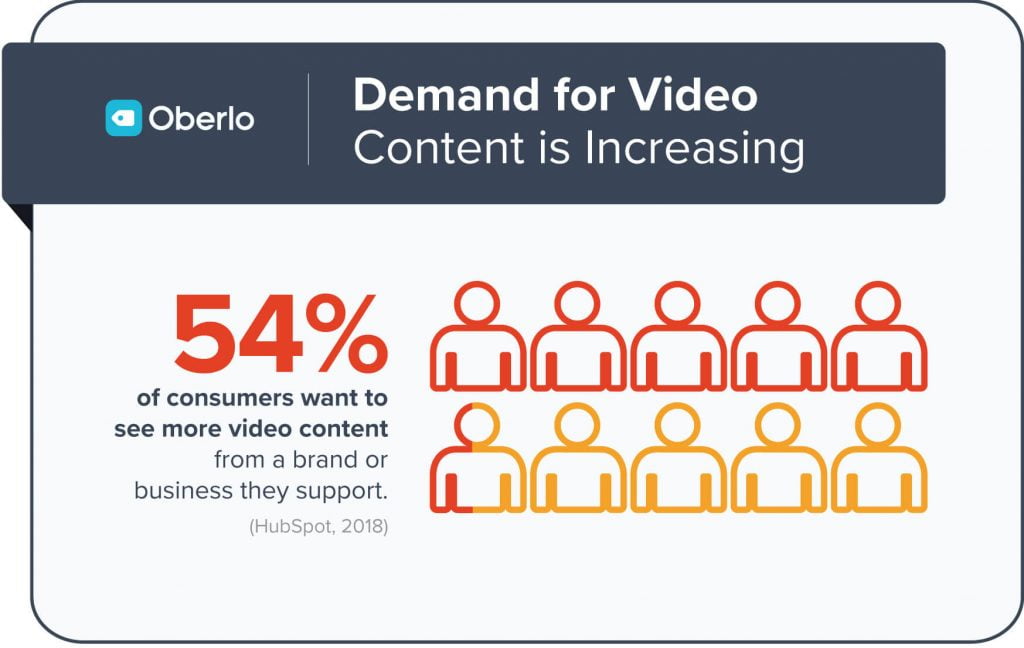
Key takeaway: Make sure your content isn’t competing for the same keywords your product or category pages are.
For example, if your product page for a green apron is currently ranking for “green apron with pockets,” don’t try and utilise this within your content. Instead, choose a keyword that you aren’t using for your product pages, such as “cute apron for sale”.
It is no good just producing content, though. You need to bear in mind Google’s EAT requirements when it comes to SEO content writing. Consider your audience, the tone of voice, optimise it with keywords, and make it unique to you!
You have products to sell and an optimised website, so now you need to find a way to boost your online presence. What better way to do it than through link building? Link building allows you to reach out to audiences that would be interested in what you have to offer but aren’t aware you exist yet.
However, there is no point in building links if they are of poor quality. You need to have clean, high-quality backlinks that you can manage. This means you have to implement link building strategies and focus on the following:
Finding your audience: You need to know who you are targeting and where they can be found. With market research complete, you can work with a blogger outreach team to build a relationship with third party domains that will publish your content.
Utilise keywords: Remember those keywords you found; now is the time to use them again. How you use your keywords as the anchor textAnchor text is the text highlighted by a hyperlink. The words highlighted are crucial for SEO, informing Google’s crawling bots about the content of the site linked to. (i.e., where you link to your website) is up to you, but you can seek the help of expert advice in this.
As an example: If you are selling aprons, then a relevant keyword that you might have is “green apron with pockets.” Utilising this within your content means that when somebody searches for this term, your website has a better chance of ranking higher and being seen.
By using “green apron with pockets” as the anchor text for your link, the audience can then discover the products you have on offer.
Create high-quality content: With third party sites and your anchor at the ready, now is the time to create compelling and engaging content.
Increasing your targeted traffic to your eCommerce website will be more than possible with SEO, and with the information in this guide, you will be able to get started in no time.
For an extra bonus feature download the eCommerce SEO Handbook here.
Are you struggling to think about what to write about for your content marketing efforts? It’s not an uncommon situation–particularly…
The essential eCommerce SEO Handbook, download your free copy today!
Digital marketing is a requirement for any business that wants to entice, engage, and excite customers online. When putting together…